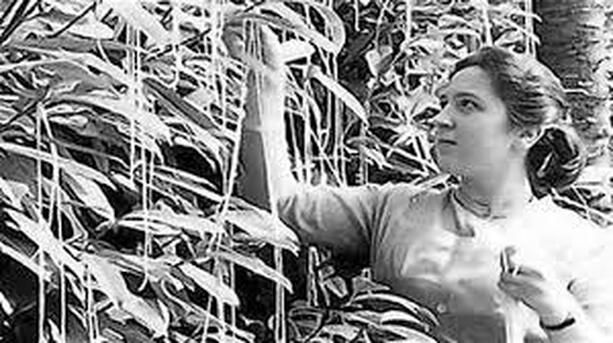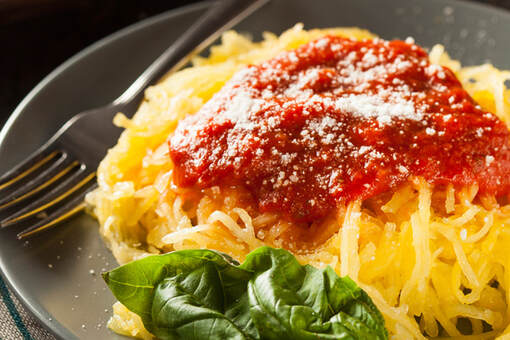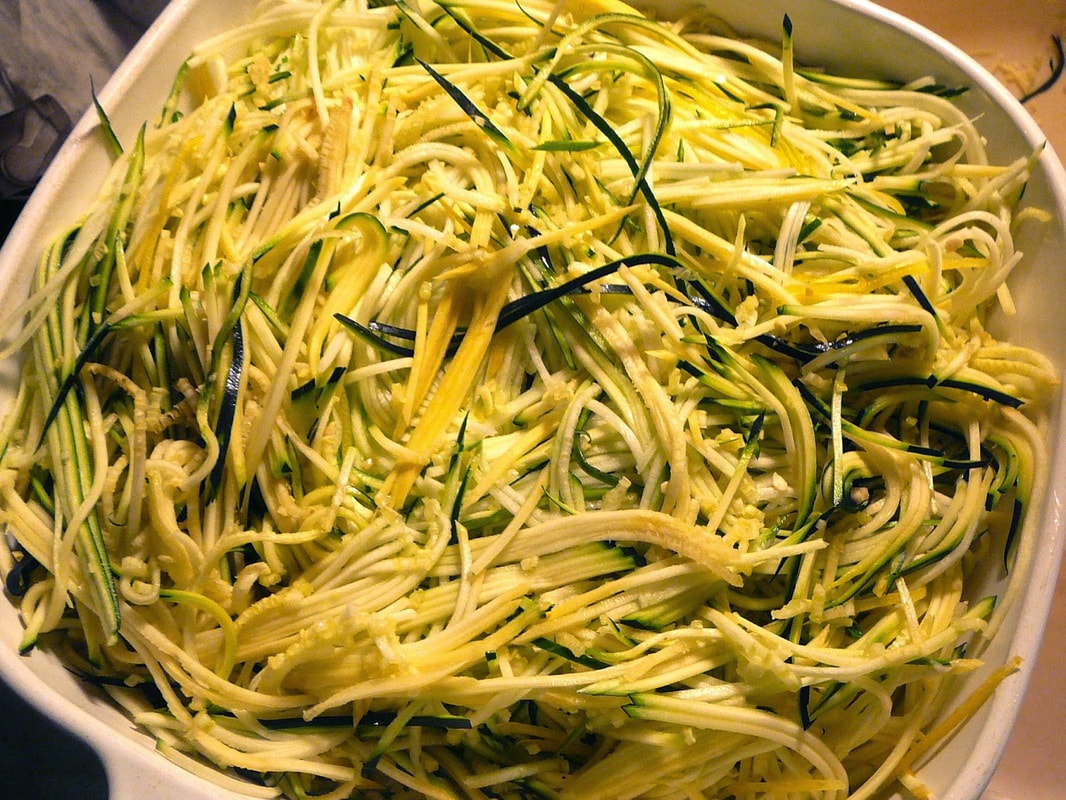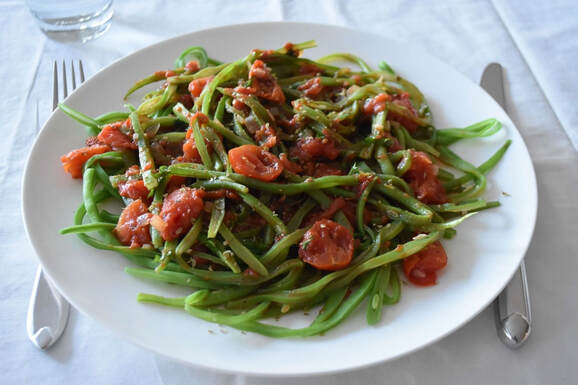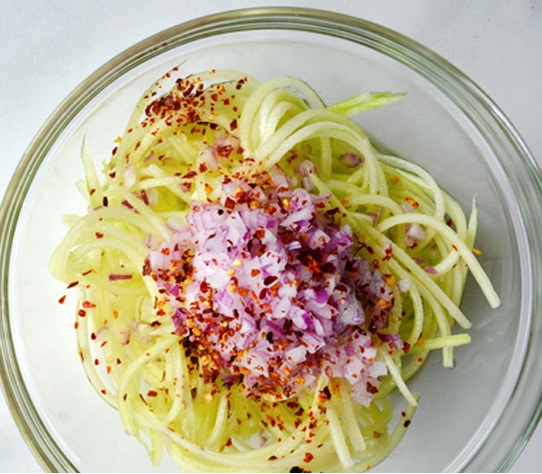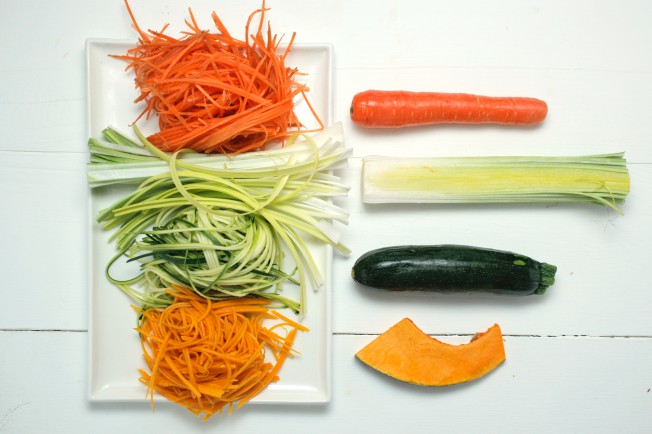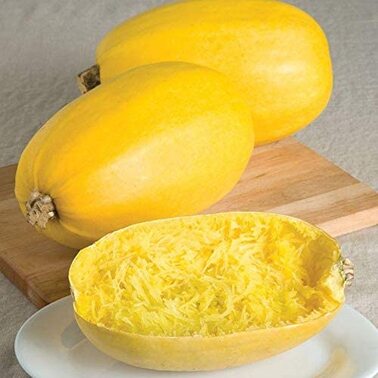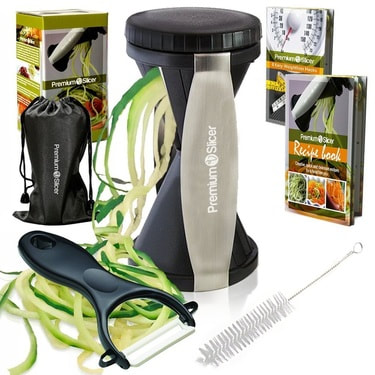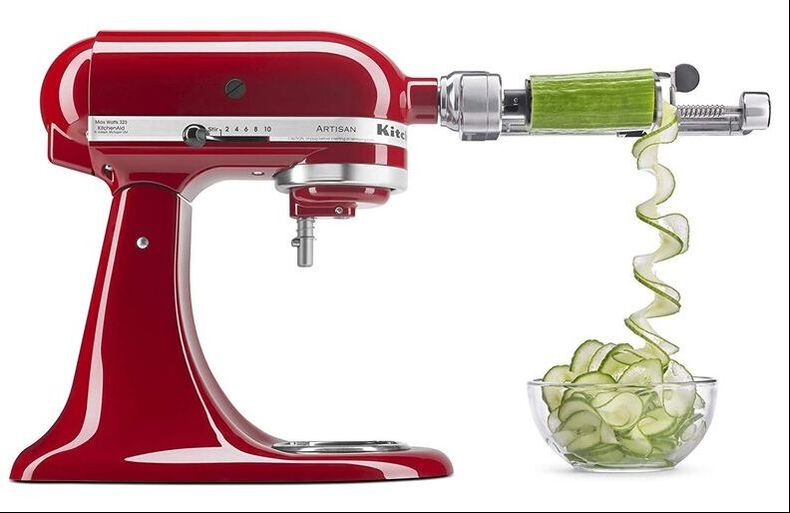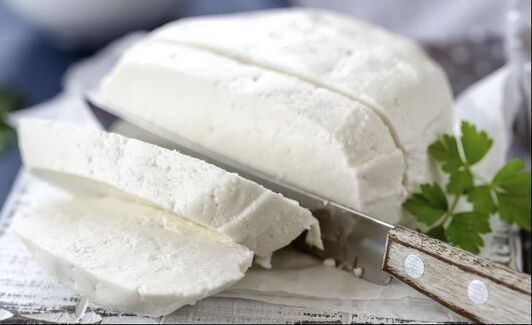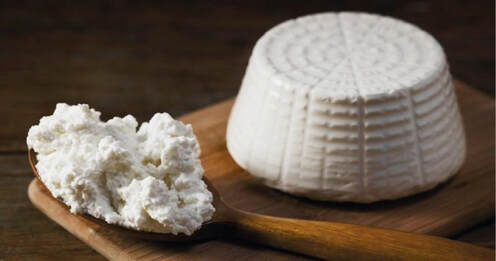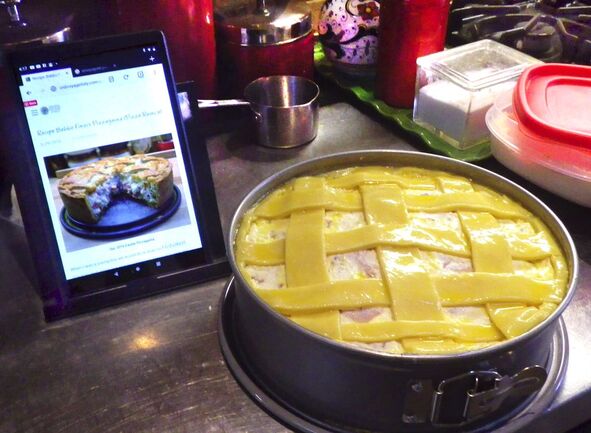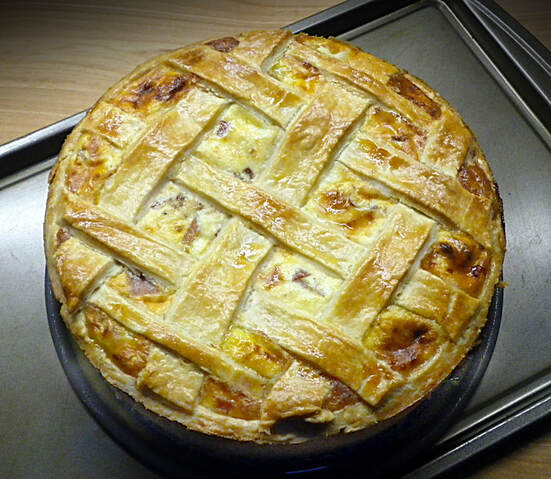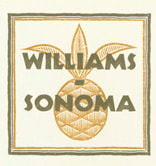|
I'm not a gullible man. Even as a boy, I wasn't one to believe everything I was told. I always asked questions... "Why? Where? When? How?" I read lots of books, including my entire encyclopedia set and my Atlas. I loved science and the arts. I used both sides of my brain. But as a 12-year-old watching the old Jack Parr show in 1963, I tended to to go by the old adage, "Seeing is believing"--especially if you see it on TV! Big mistake! What I saw was a very legitimate sounding short documentary film with a very scholarly, British voice talking about the spaghetti harvest in Switzerland, and mentioning the "tremendous scale of the Italian's... (harvest)" and the "vast spaghetti plantations in the Po valley". From that point on, until I was in my early twenties, I actually believed there was some sort of special tree or bush in Italy that produced some sort of spaghetti... fruit, pod or otherwise. It wasn't until I saw Jack Parr himself talking about the hoax on the Tonight Show in the early 1970s that I learned the embarrassing truth--a "truth" that I would argue about with my non-Italian friends growing up... "Real Italian spaghetti grows on trees!", I would insist. Parr claimed they didn't get a single call about the segment and most people bought it hook, line and sinker. OK, so maybe I was a bit gullible. But it was a very convincing documentary film, produced originally as a serious film for, of all things, a British news show... and besides, I was only 12! On April 1, 1957, on April Fool's Day (Pesce d'Aprile in Italian), the BBC television show Panorama aired the short "documentary" about the "spaghetti harvest" in Ticino, Switzerland, on the border of the Italian Alps. The film shows spaghetti trees ripe with long strands of spaghetti and a farming family harvesting by hand, putting the spaghetti into baskets and then carefully laying them out to dry in the "warm Alpine sun." Some viewers bought it entirely and called BBC to find out where they could buy some of the "real spaghetti". Many British gardeners wanted to know how to buy a spaghetti bush for their own garden. Others were very angry that a joke was portrayed as a serious subject on a real news program. Still others--like me--just tucked this into their knowledge banks, unquestioningly and carried it as a "truth" through at least part of their lives, being even more convinced every time they heard the expression "fresh pasta"... of course, that must be referring to the real stuff fresh picked from the trees! What did I know. After all, neither my Mother or Grandmother made fresh spaghetti, because spaghetti trees probably didn't grow in our climate. All I ever saw growing up was dried, boxed spaghetti--you know, the fake stuff. The following video is the original broadcast in 1957 in England... The following video gives a behind the scenes take on the Spaghetti Hoax story from a member of the Panorama production team who came up with the idea... The next video shows a further chapter of this hoax broadcast in 1967 in Britain explaining how the spaghetti crop was being ruined by a terrible pest--the spag-worm, or "troglodyte pasta". ("Troglodyte" refers to a person so stupid because he lives in a cave). In 1978, San Giorgio Pasta produced a remake of the Spaghetti Hoax for one of their TV ads. Finally, cooking know-it-all, Martha Stewart (I'm not a fan) got into the act in 2009 with her own little spoof about her Spaghetti Bush, "spago officinalis" ("official string") trees. 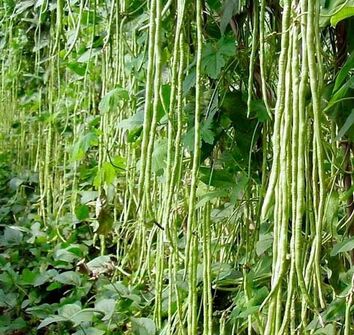 Italian snake bean seeds on Amazon Italian snake bean seeds on Amazon Well, I've had a lot more culinary education since being misled by that little April Fool's prank when I was young and impressionable: my Mom and Dad taught with every loving dish they put in front of me; Grandma taught me her authenticity; having home and studio in Manhattan for so many years where varied cuisines are around every corner also taught me; In my 30s, I finally learned how to cook from Julia Child, Craig Clairborne, Marcella Hazan, Mary Ann Esposito and Pierre Franey. I now make fresh pasta with my son, Lucas from time to time. And during our Voyage throughout Italy, I never saw a single strand of spaghetti on a bush, tree or vine. Ever. (OK, so I did look, just to be sure.) However, I have since learned that there are actually spaghetti alternatives that grow from Madre Terra. I even grew 2 foot long "snake" beans a few years ago that came pretty close. Here are a few veggie spaghetti alternatives... If you want to make your own, fresh "veggie spaghetti" at home, pick up a Premium Vegetable Spiralizer from Amazon or the attachment we use for our stand mixer, the Kitchenaid Spiralizer Attachment. It's a lot easier than picking the spaghetti from the trees, collecting in baskets and spreading them out in the sun to dry...
(Damn you, Jack Parr and your dry sense of humor!) --Jerry Finzi Most Italian-Americans have heard of basket cheese, that light, soft, fresh cheese (similar to ricotta) sold in Italian specialty stores every Easter which is used to make the traditional pizzagaina or pastiera di grano (wheat grain pie) recipes. In the U.S. it is rarely seen year-round and is mostly used as an ingredient. In Italy, basket cheese is is called formaggio fresca (fresh cheese) and is readily available all year long for use as both recipe ingredient and as a table cheese, just as ricotta is eaten, but with a less salty and milder flavor. 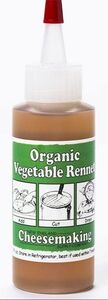 Basket Cheese Ingredients 1 gallon whole milk (or, if you can find some, use goat's milk) 1/4 teaspoon rennet 1/4 teaspoon salt (basket cheese is less salty than ricotta) You will need: Directions
You can now use your basket cheese fresh as an ingredient in recipes, such as the traditional Easter pizzagaina. If you want to eat it fresh (the same day is best) you can turn the baskets upside down onto a serving plate and remove the basket. This is a mild cheese, but if you like you can sprinkle with a little sea salt or fresh ground pepper. You can also spread it on bread or crostata and drizzle with honey or balsamic and serve with with figs or fresh berries. Although it should be eaten the day it's made, you can keep it for several days by keeping the basket in a plastic container along with with an inch of milk. 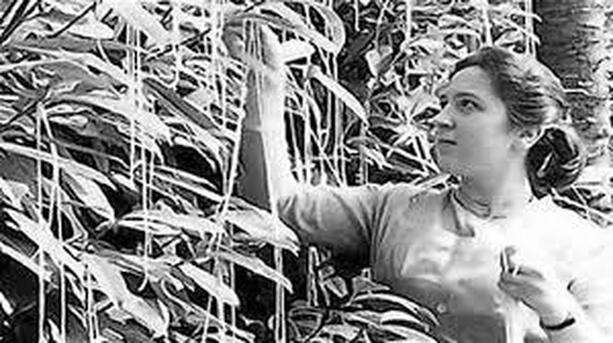 Making Ricotta from the Leftover, Fresh Whey Although my wife Lisa's ricotta recipe is great, technically, it's not a true ricotta made from whey. Making true ricotta (re-cooked, or cooked twice) is incredibly simple once you have whey leftover from cheese-making using rennet. The whey has to be fresh from the cheese-making process above.
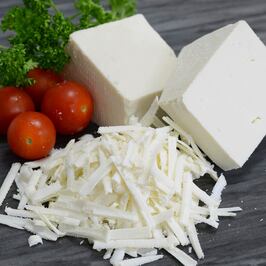 Making Ricotta Salata Ricotta salata is basically a firm, saltier version of ricotta cheese that is very similar to feta. While feta is made with rennet, ricotta salata is made from the whey leftover from cheese-making, just as normal ricotta is made. Ricotta salata needs more salt than normal ricotta and is pressed it to release any extra moisture. You need a fine mesh cheesecloth or butter muslin.
Ricotta salata is beautifully paired with sliced apples, pears, fresh figs or crumbled on pizza, pasta or salads. Buon apetitto! --Jerry Finzi You might also be interested in...
Southern Italian Pastries: Pasticiotti versus Pasta Croce Recipe: Babbo Finzi's Pizzagaina (Pizza Rustica) Recipe: Lisa's Home Made Ricotta Cheese Ricotta: Twice Cooked and Not Quite a Cheese? Recipe: Sicilian Ricotta Cheesecake Making Fresh Giuncata Cheese 31 Italian Cheeses: Goat, Cow, Buffalo and Sheep, Oh My! Supermarket Parmesan Cheese Contains Cellulose: Not All That it's Grated Up to Be? Marscarpone: More than Just Italian Cream Cheese This year we decided to make our Pizzagaina recipe once again. We loaded up my Kindle with our recipe on GrandVoyageItaly.com and got started getting the ingredients together. As usual, my son Lucas helped with the mise en place. He is a great sous chef but nowadays is also cooking a lot of his own dishes.
With the coronavirus limitations of shopping, and certain things in our fridge missing, we decided to use up some smoked gruyere in place of the mozzarella but still used ricotta and fontina (I love its creaminess). That's the way of the Italian cucina--not letting anything go to waste. Otherwise, our recipe was the same. And each time I make this treat, I'm amazed that I got the ingredients perfectly proportioned--a difficult thing to do when writing up a recipe for other people to duplicate. This crust is just wonderful to work with and fits the spring pan perfectly, with even a little left over after making the lattice strips. In the end, we made the pizzagaina a couple of days after Easter since we had a huge ham that we baked for Easter dinner, along with roasted potatoes, carrots and onions and garlic, along with home made apple and cranberry sauce. There was plenty of leftover ham for soup, sandwiches and the pizzagaina. Try this recipe if you get a chance. If you prefer a more solid filling, add two more eggs when making the filling. Buon apettito! --Jerry Finzi |
Archives
July 2023
Categories
All
|

